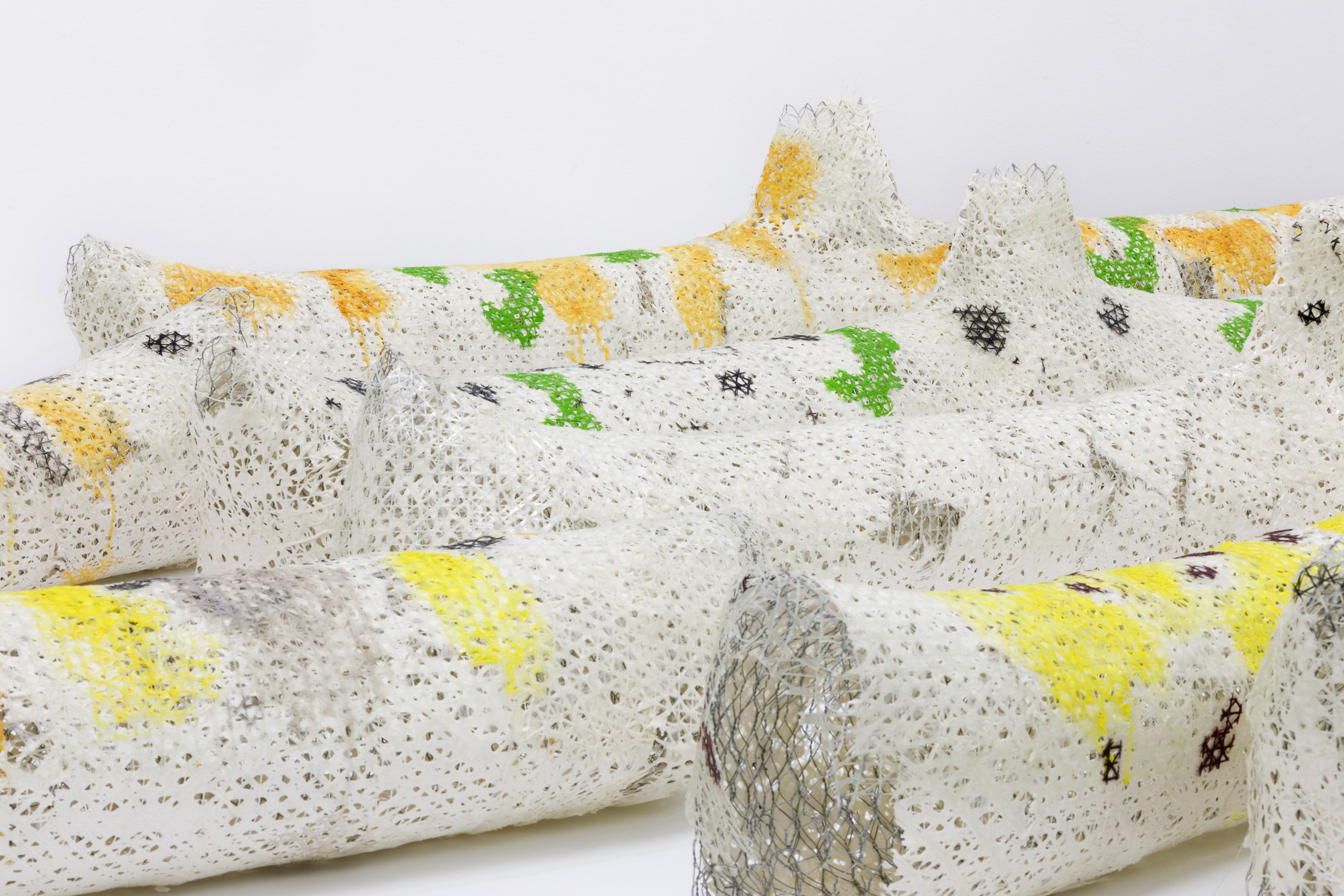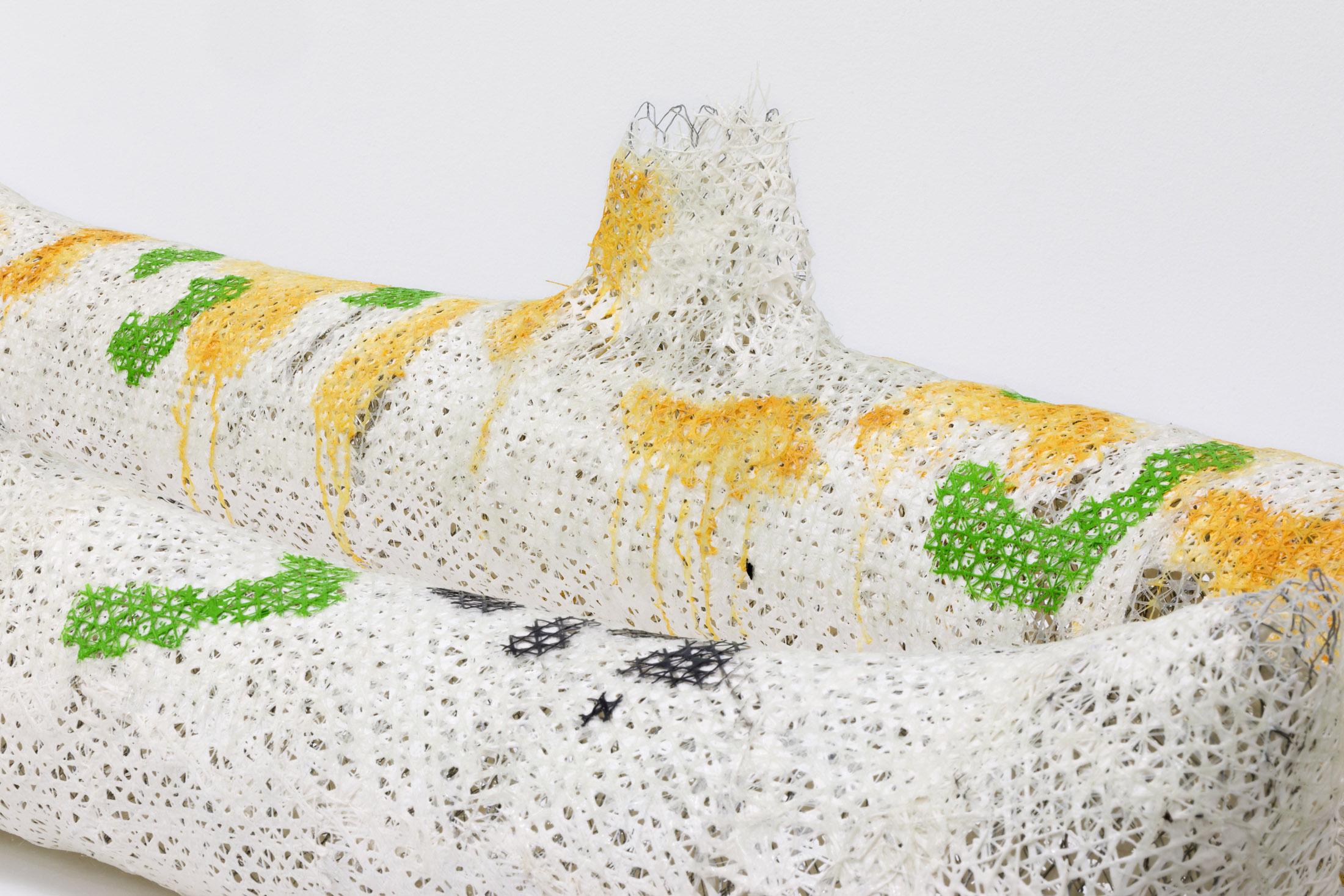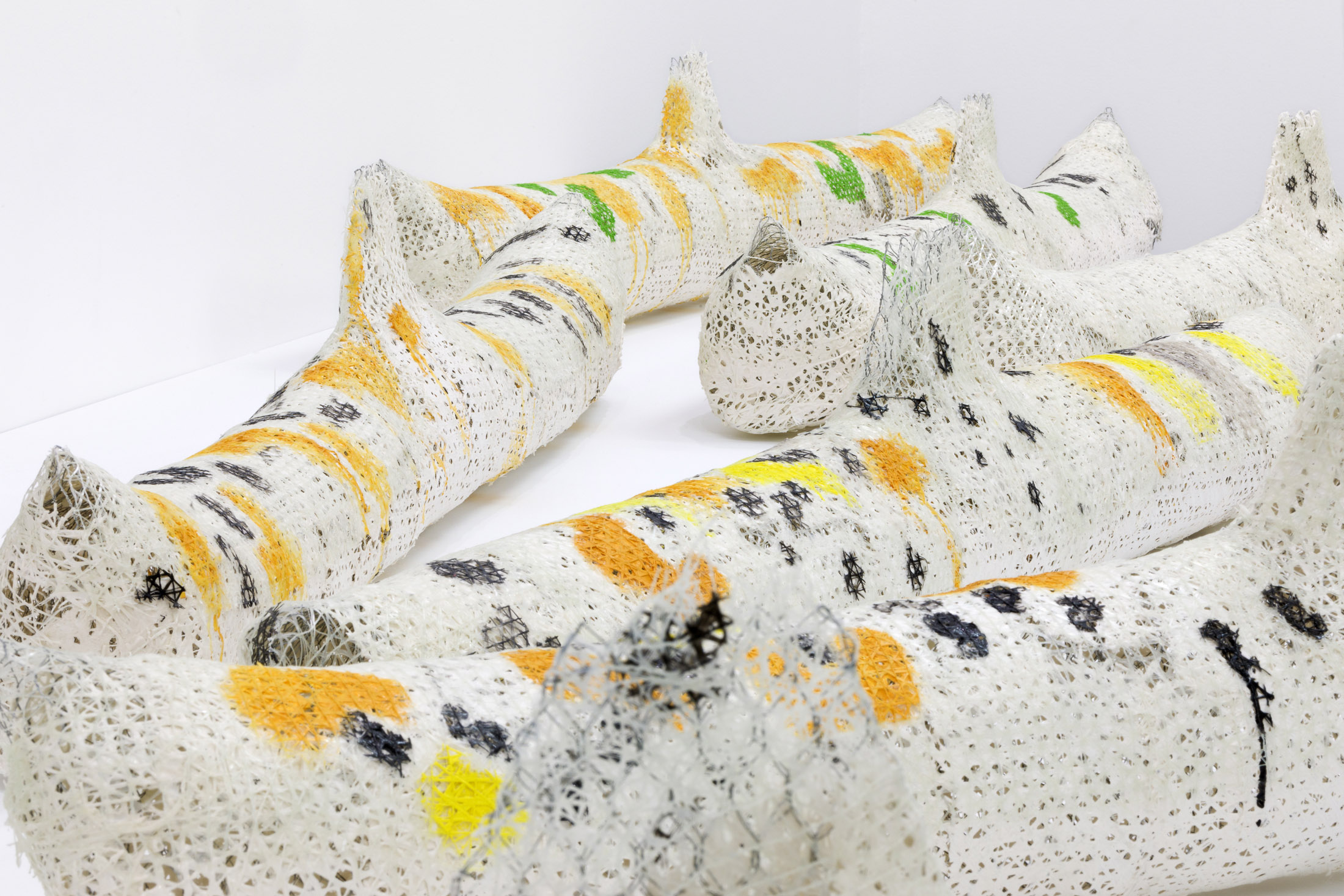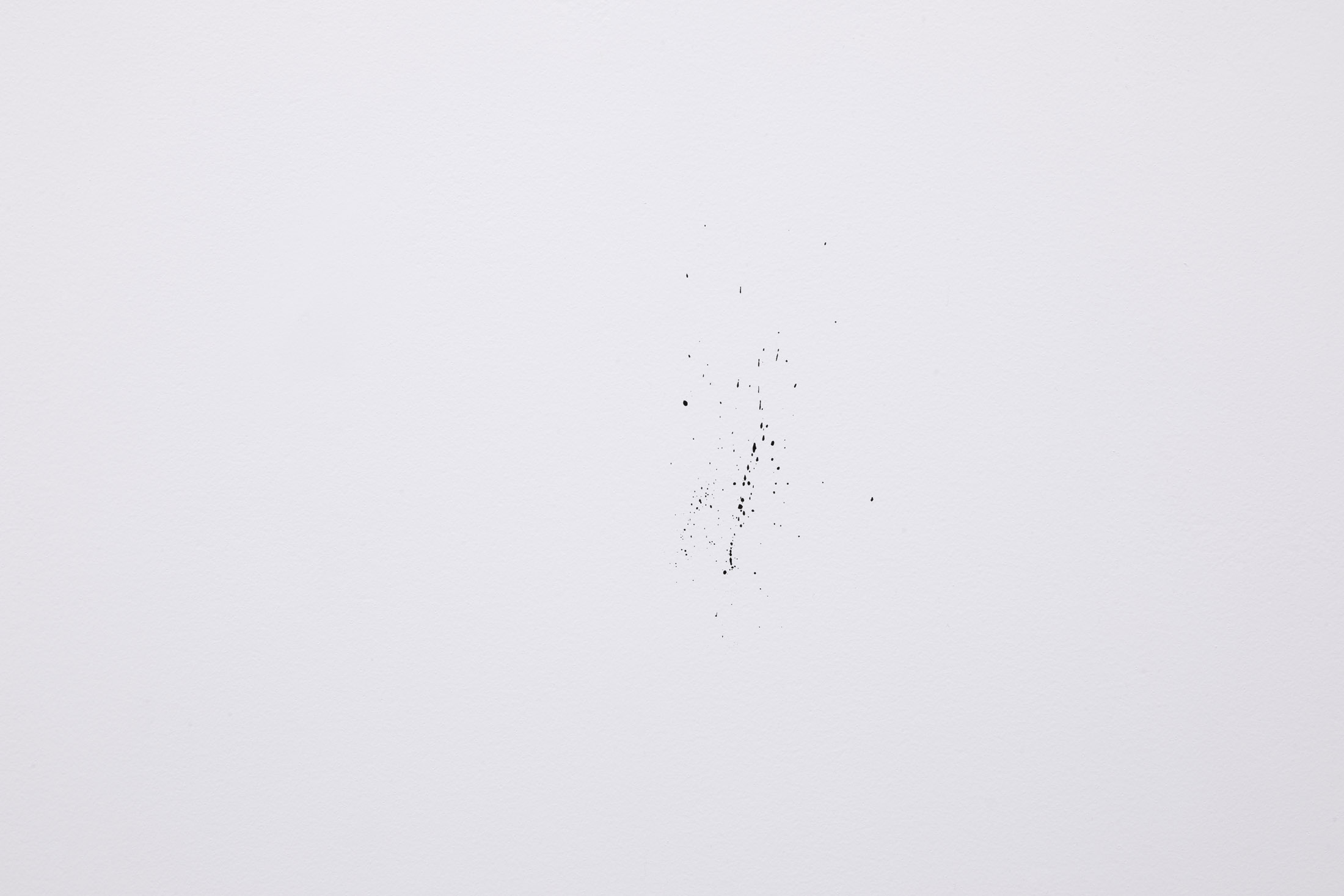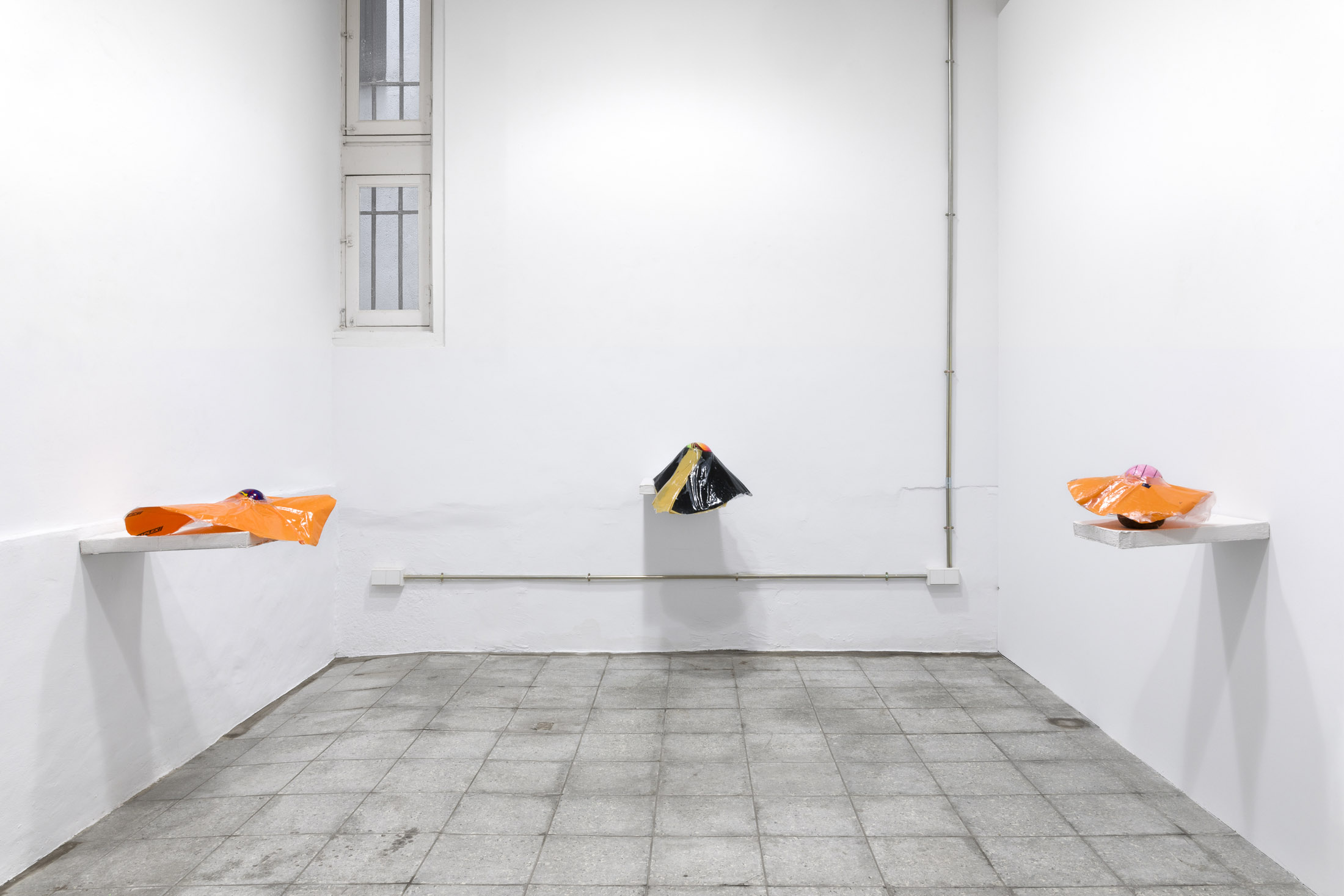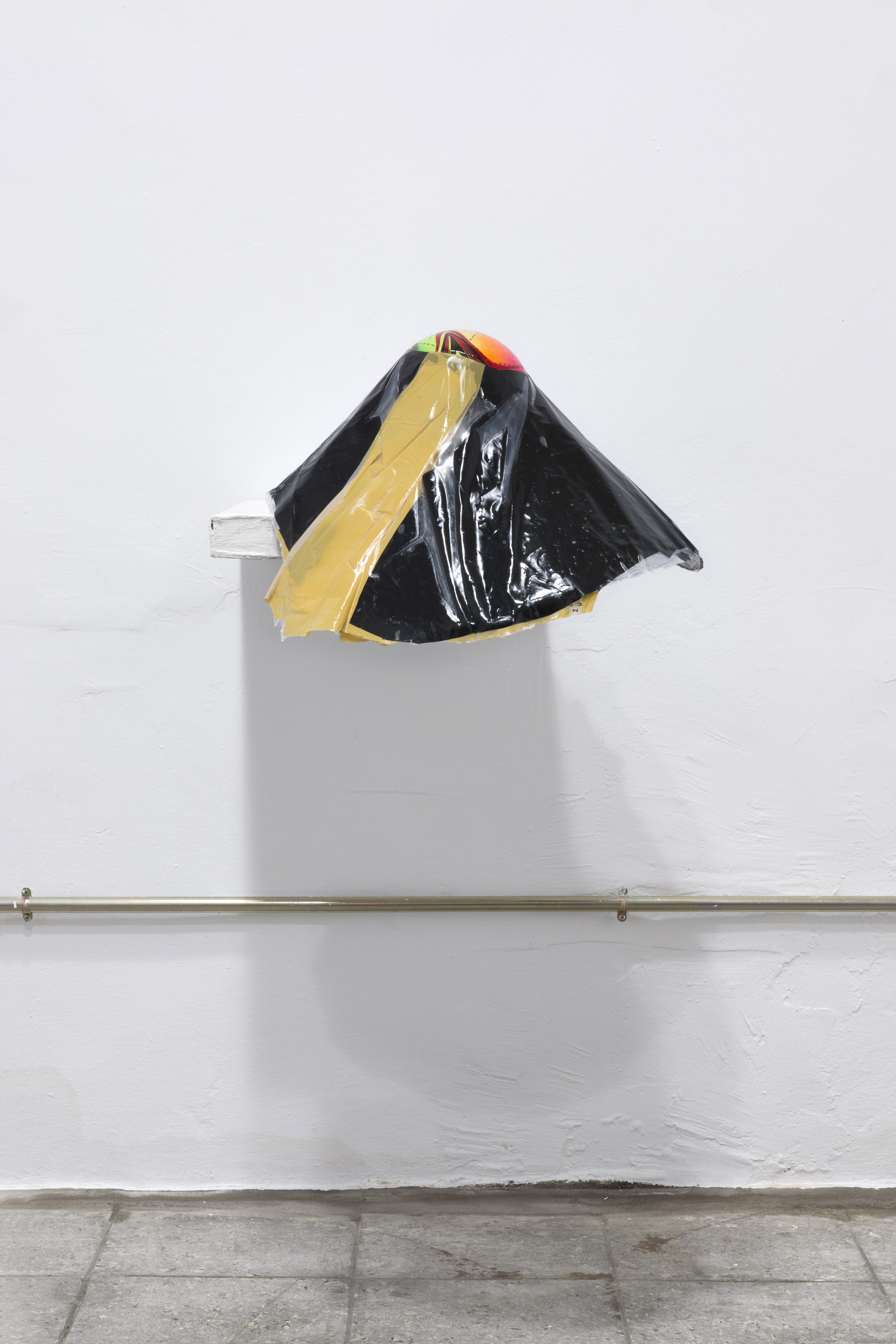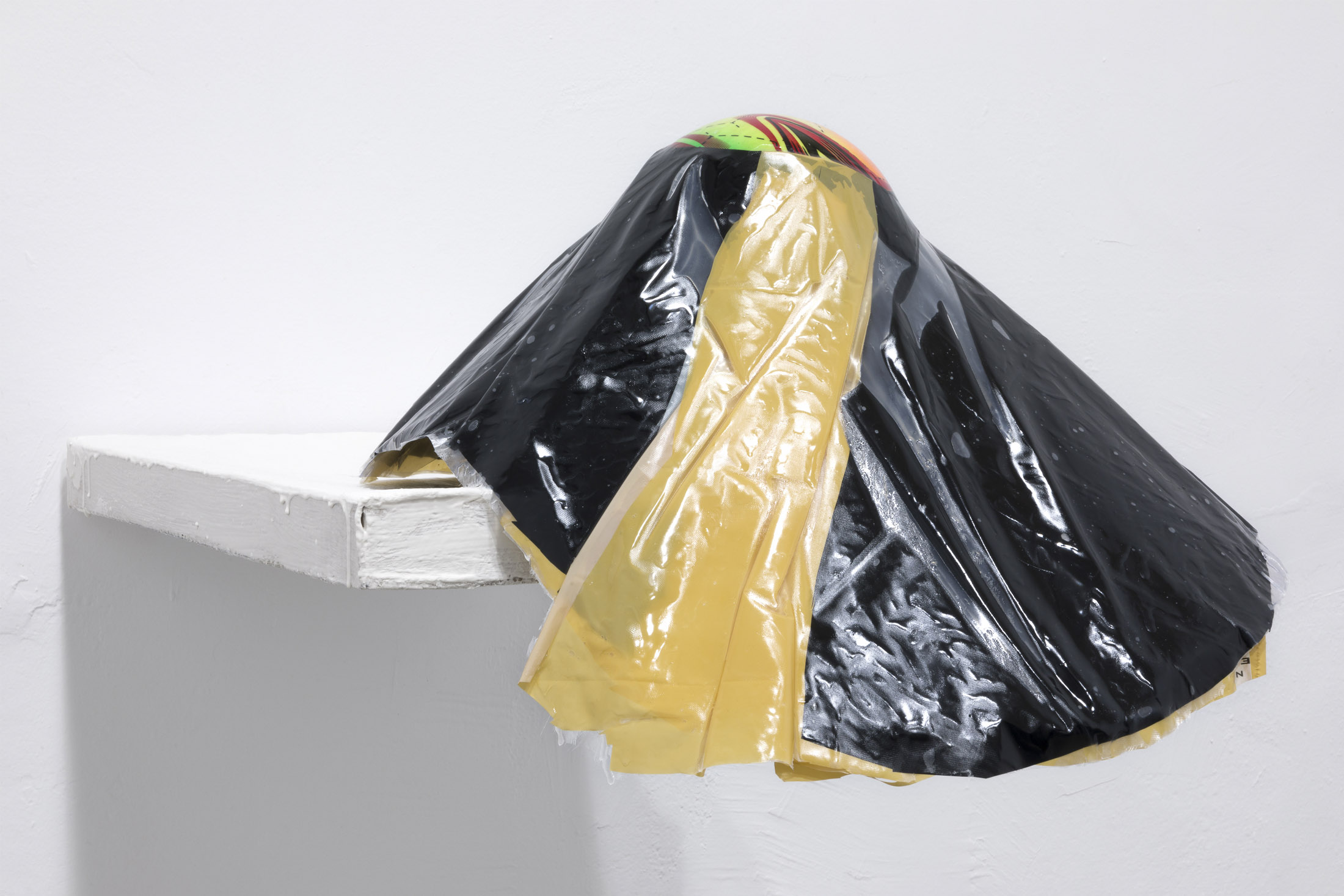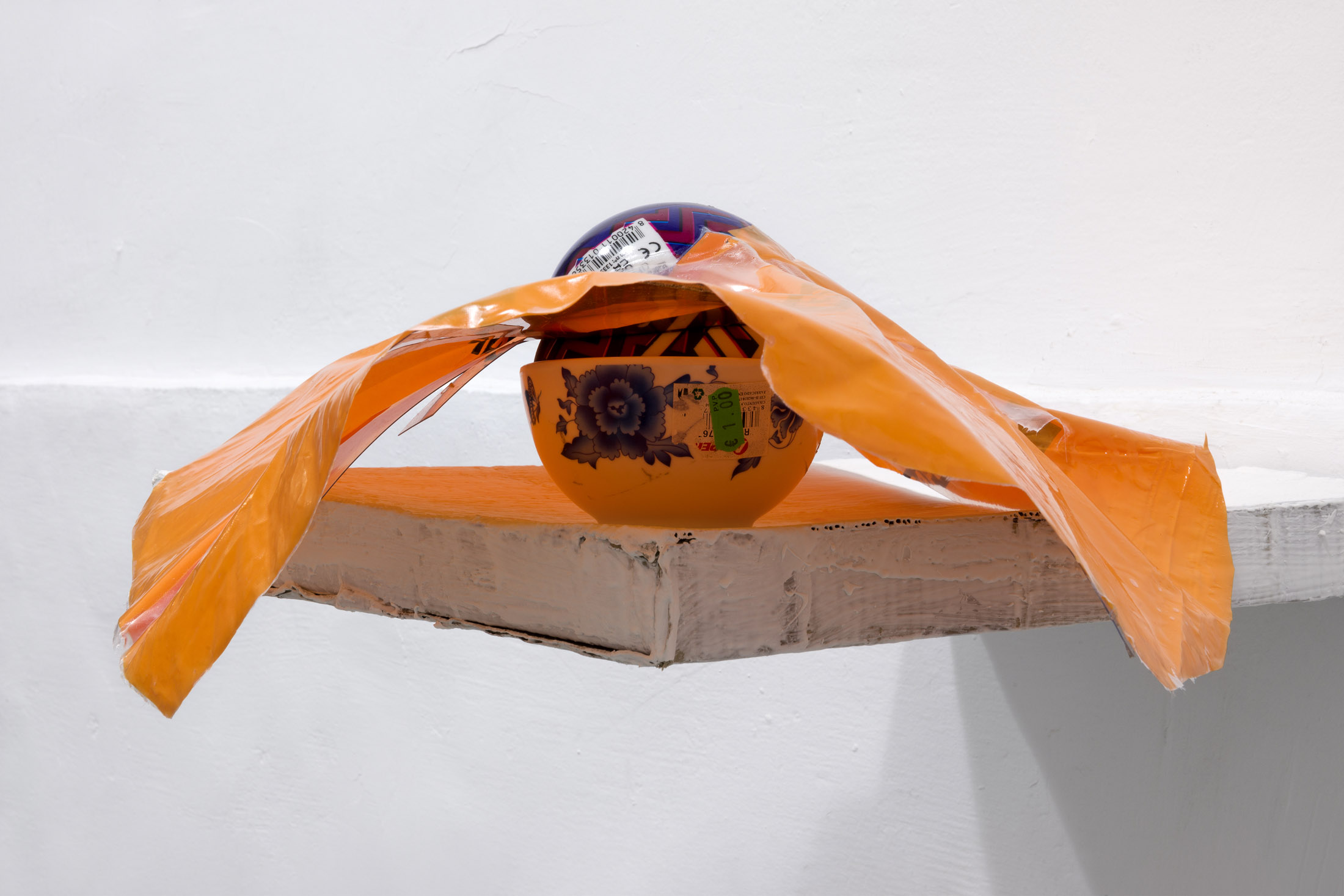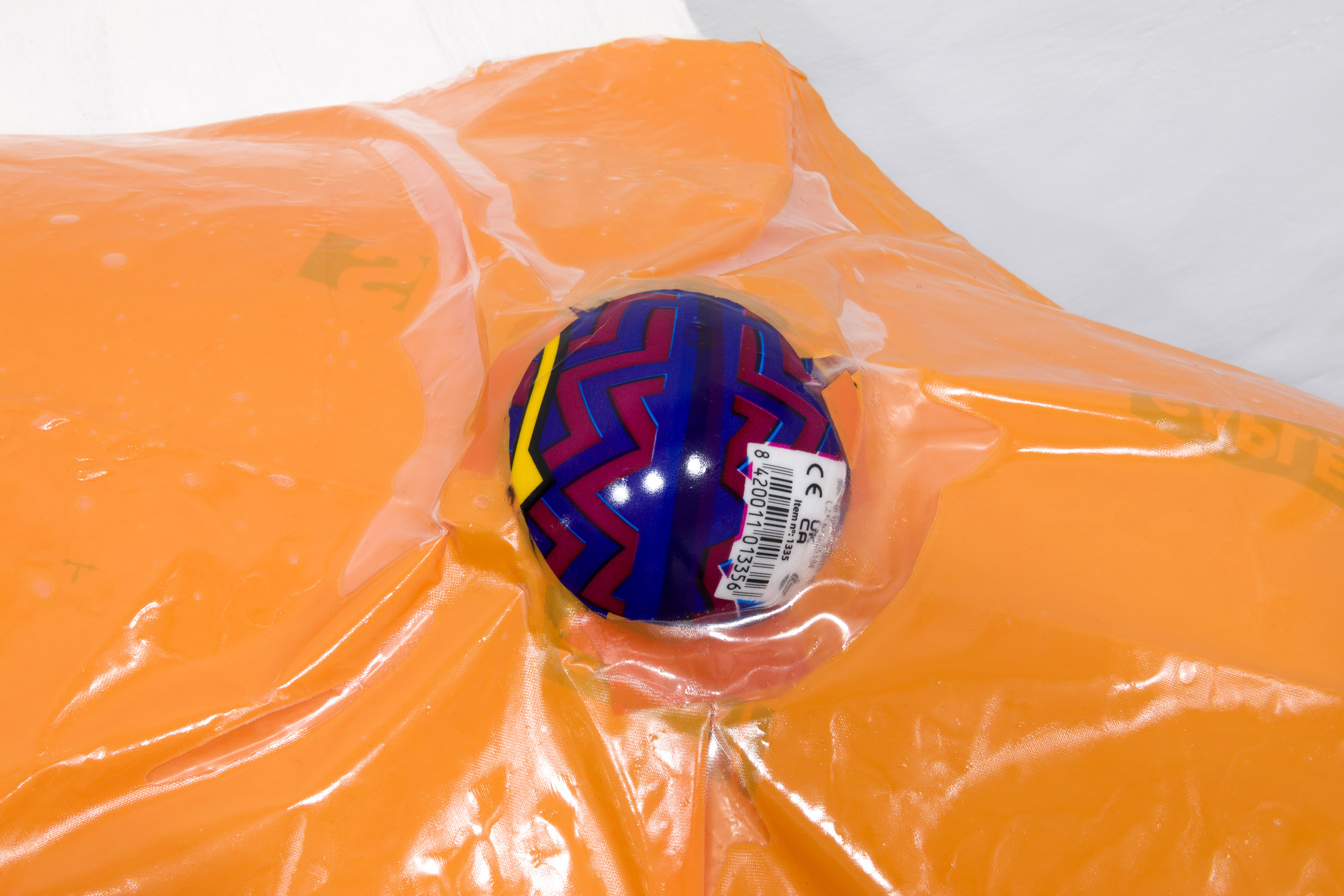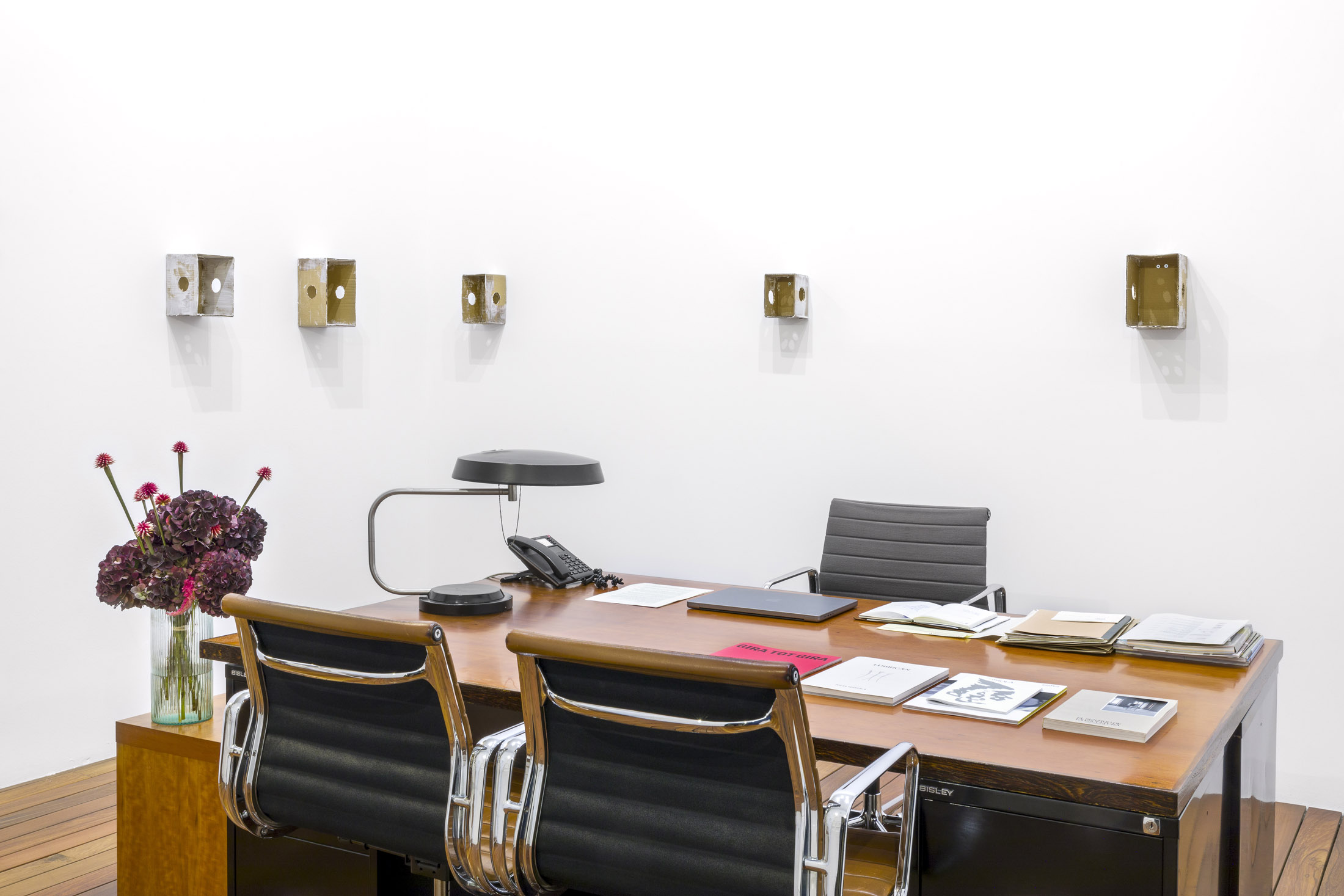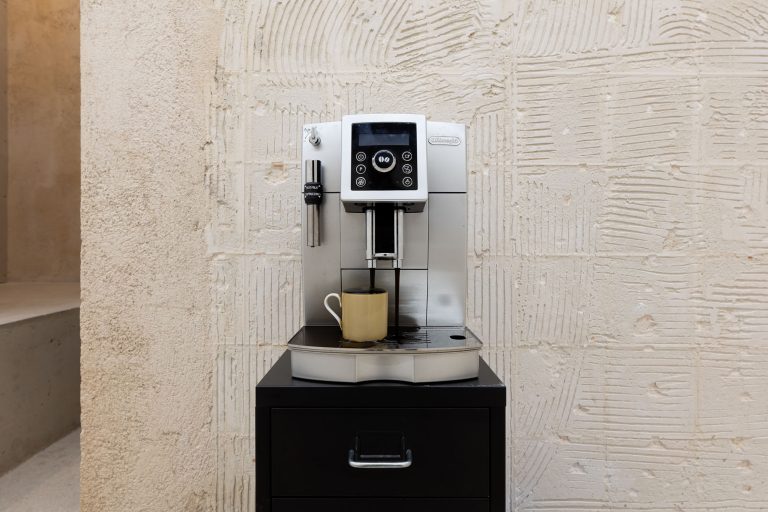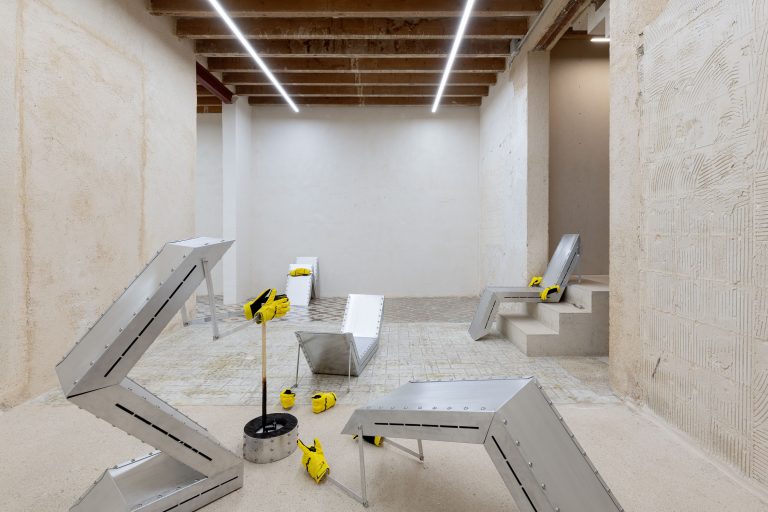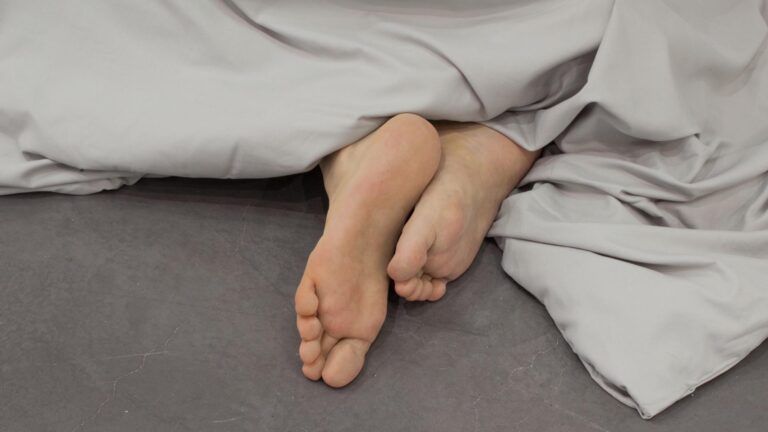Artist: Julia Spínola
Exhibition title: Cambio de uso
Venue: Galería Ehrhardt Flórez, Madrid, Spain
Date: November 18, 2023 – January 13, 2024
Photography: all images courtesy of the artist and Galería Ehrhardt Flórez, Madrid
Ehrhardt Flórez Gallery presents ‘Cambio de uso’ [Change of use], Julia Spínola’s fourth exhibition at the gallery.
The show consists of new works that define possible typologies and delineate, with undefined limits, novel approaches to sculptural practice.
Discovering and investigating how things are made, the processes of copying and the material procedures of sculpture drive the new routines of Spínola’s work. Despite being articulated on the basis of the fragmented, the broken, and the discontinuous, even based on exercises in tabula rasa which lead us to consciously forget what was previously learned, her work proposes a certain sculptural system.
The action of naming and imbuing things with meanings, to contemplate them as containers, bags, or boxes arranged and intended to be loaded with images and readings, forms a working methodology that in Spínola covers the word, conceptual reflection, and, fundamentally, the material and the manual.
‘Cambio de uso’ presents an installation composed of several mesh cylinders covered in resin that seem to encapsulate part of the air that remains inside them. Open and hollow pieces closed at the ends, they are covered by successive skins, each of them constructed with its own procedure and tools, transforming the piece from malleable to rigid, from invisible to visible.
These works by Julia Spínola are not fixed: not as images (the dazing of the eye generating a diffuse vision) nor as objects. They repeat patterns that in her imaginary return a material version of the sculptural. It is about memory and oblivion, about knowing and not knowing, about a way of doing in which the support and the ‘’being” of the pieces constitute the foundations of her practice.
The exhibition continues with two other works anchored to the wall, arranged in a sequence of several cardboard boxes. They are a work and its replica on a larger scale. Using colour and copy, Spínola poses raises issues of scale, material, finish, and perception. The execution of the piece, its material texture and qualities in relation to its weight and consistency belong not only to the field of materials but also to the field of perception. Things both are and appear to be.
In this series of works, the change of scale, person and copy acquire a notable relevance.
The groups of boxes refer to oneself, to a certain idea of a person. To how scale affects the viewer. The two pieces, one and its copy, establish a double set of relations: between themselves, and between them and the person who is measured here. Physical, speculative, and real.
In the main space of the gallery are two silkscreen prints on the wall that, like two black splashes, act as punctuation within the exhibition. They activate the exhibition by means of a wink, a blow, a small explosion, or a gesture, alluding to both the field of the optical and the representational, offering a higher-pitched, shrill and vibrant timbre that contrasts with the lower, drier tone of the rest of the exhibition.
While the series of boxes continues in the next room, another of the gallery’s spaces brings together three works from a new, previously unseen series: half-deflated plastic balls on which pressure has been materially exerted so that all the air accumulates in the top of the ball. The air fills this volume and turns the surface of the ball into something smooth and full that emerges between plastic rings or veils. There is a desire for colour and an intention to leave visible all the elements of the circulation and socio-economic history of the objects used: bar codes, labels, place of manufacture.
We could say that the richer qualities of a certain idea of abstraction, and a certain idea of the common, articulate a way of understanding sculpture. In spite of, or perhaps as a cause of that incessant stuttering that occurs in Spínola’s work, things appear and disappear, are and are not, become visible as a body or as an idea. In the discontinuity of her work we glimpse a current that ties together rhythms, images, and displacements. The particular and the dislocated, as the singular functioning of each work, participates in an experience of the common wherein the work is always available to a relationship with our collective present.
Julia Spínola, Cambio de uso, 2023, exhibition view, Galería Ehrhardt Flórez, Madrid
Julia Spínola, Cambio de uso, 2023, cardboard, acrylic resin, acrylic enamel and steel 2 pieces, 77 x 179 x 38.5 cm, 31.5 x 71 x 16 cm
Julia Spínola, Cambio de uso, 2023, cardboard, acrylic resin, acrylic enamel and steel 2 pieces, 77 x 179 x 38.5 cm, 31.5 x 71 x 16 cm
Julia Spínola, Cambio de uso, 2023, cardboard, acrylic resin, acrylic enamel and steel 2 pieces, 77 x 179 x 38.5 cm, 31.5 x 71 x 16 cm
Julia Spínola, Persona, 2023, metal mesh, fiberglass fabric, acrylic resin, epoxy and watercolor, 11 pieces, 148 x 32 x 17 cm (each) 368 x 160 x 93 cm (wooden platform)
Julia Spínola, Persona, 2023, metal mesh, fiberglass fabric, acrylic resin, epoxy and watercolor, 11 pieces, 148 x 32 x 17 cm (each) 368 x 160 x 93 cm (wooden platform)
Julia Spínola, Persona, 2023, metal mesh, fiberglass fabric, acrylic resin, epoxy and watercolor, 11 pieces, 148 x 32 x 17 cm (each) 368 x 160 x 93 cm (wooden platform)
Julia Spínola, Persona, 2023, metal mesh, fiberglass fabric, acrylic resin, epoxy and watercolor, 11 pieces, 148 x 32 x 17 cm (each) 368 x 160 x 93 cm (wooden platform)
Julia Spínola, Persona, 2023, metal mesh, fiberglass fabric, acrylic resin, epoxy and watercolor, 11 pieces, 148 x 32 x 17 cm (each) 368 x 160 x 93 cm (wooden platform)
Julia Spínola, Cambio de uso, 2023, exhibition view, Galería Ehrhardt Flórez, Madrid
Julia Spínola, Rojamente #5, 2023, silkscreen on wall, variable measures and colours
Julia Spínola, Rojamente #5, 2023, silkscreen on wall, variable measures and colours
Julia Spínola, Cambio de uso, 2023, exhibition view, Galería Ehrhardt Flórez, Madrid
Julia Spínola, Sin título #2, 2023, bowl, ball, acetate, plastic bag, fiberglass veil, epoxy, cardboard box and acrylic resin, 71 x 50 x 41 cm
Julia Spínola, Sin título #2, 2023, bowl, ball, acetate, plastic bag, fiberglass veil, epoxy, cardboard box and acrylic resin, 71 x 50 x 41 cm
Julia Spínola, Sin título #2, 2023, bowl, ball, acetate, plastic bag, fiberglass veil, epoxy, cardboard box and acrylic resin, 71 x 50 x 41 cm
Julia Spínola, Sin título #3, 2023, bowl, ball, acetate, plastic bag, fiberglass veil, epoxy, cardboard box and acrylic resin, 50 x 60 x 22 cm
Julia Spínola, Sin título #3, 2023, bowl, ball, acetate, plastic bag, fiberglass veil, epoxy, cardboard box and acrylic resin, 50 x 60 x 22 cm
Julia Spínola, Sin título #3, 2023, bowl, ball, acetate, plastic bag, fiberglass veil, epoxy, cardboard box and acrylic resin, 50 x 60 x 22 cm
Julia Spínola, Sin título #1, 2023, bowl, ball, acetate, plastic bag, fiberglass veil, epoxy, cardboard box and acrylic resin, 34 x 46 x 21 cm
Julia Spínola, Sin título #1, 2023, bowl, ball, acetate, plastic bag, fiberglass veil, epoxy, cardboard box and acrylic resin, 34 x 46 x 21 cm
Julia Spínola, Sin título #1, 2023, bowl, ball, acetate, plastic bag, fiberglass veil, epoxy, cardboard box and acrylic resin, 34 x 46 x 21 cm
Julia Spínola, Cambio de uso, 2023, exhibition view, Galería Ehrhardt Flórez, Madrid
Julia Spínola, Cajas #2, 2023, 3 cardboard boxes and acrylic resin, 26 x 286 x 15 cm







